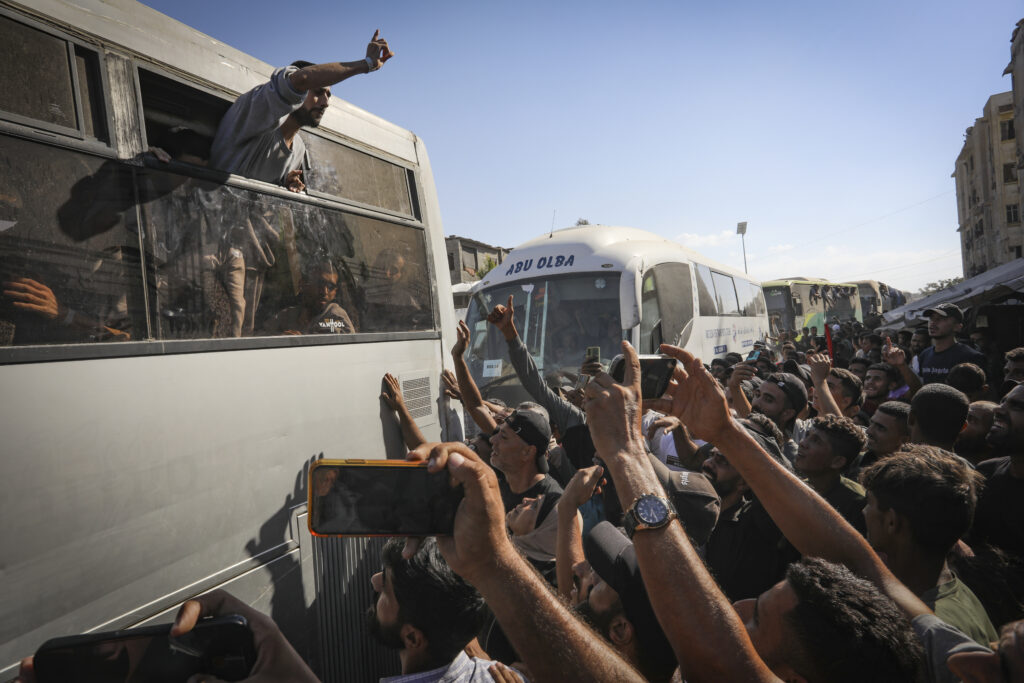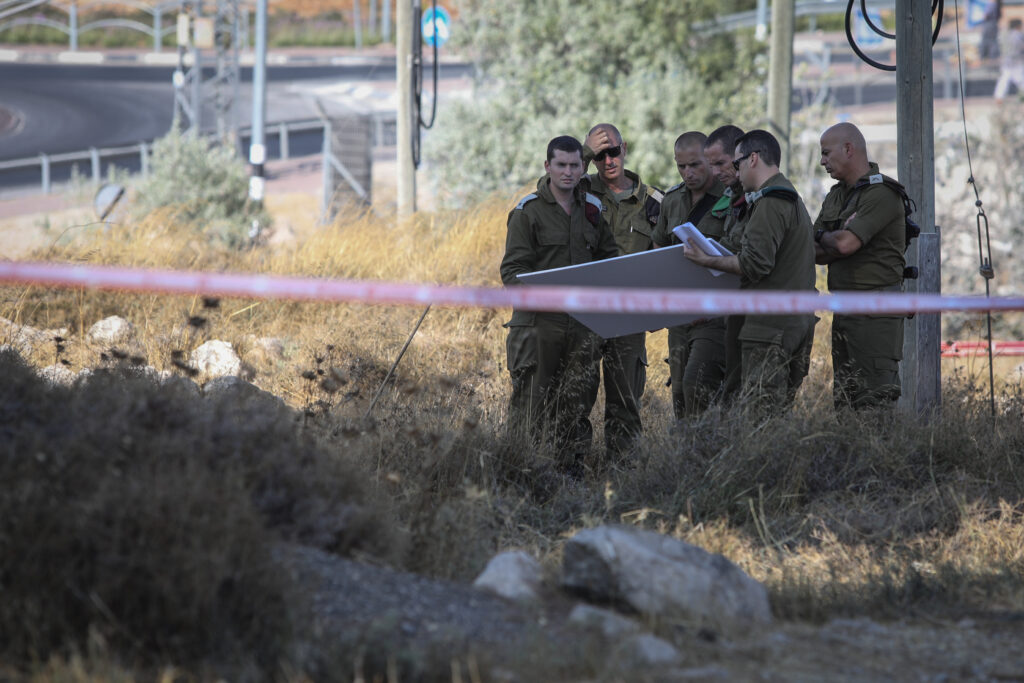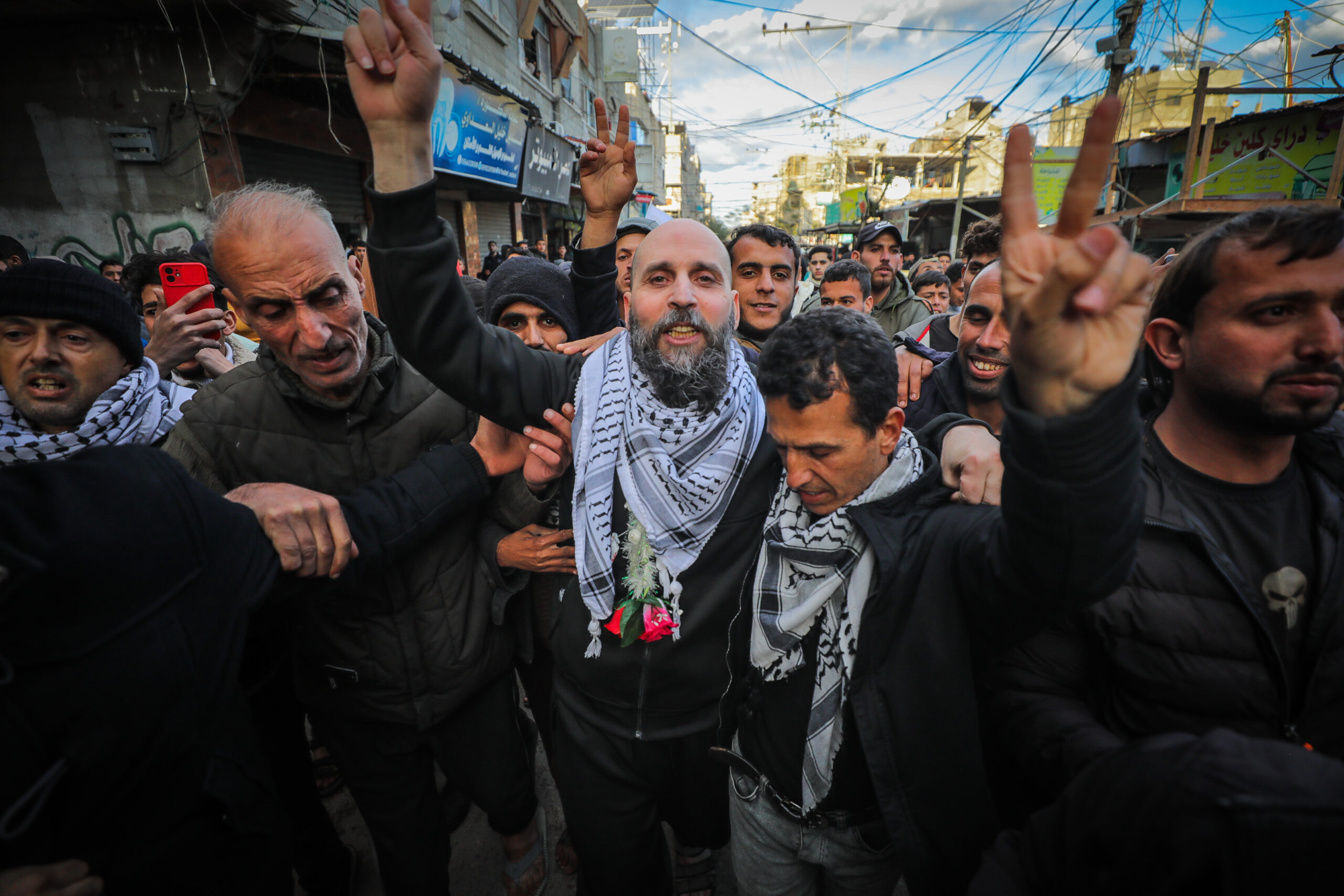Convicted murderers received over $70 million from Palestinian Authority while imprisoned—raising questions about incentivizing terrorism.
Israel’s recent release of 250 Palestinian terrorists serving life sentences for murder has created an unprecedented situation: 160 of them are now millionaires, each having received more than 1 million shekels from the Palestinian Authority’s “pay-for-slay” program during their incarceration.
The financial windfall represents one of the most troubling aspects of the U.S.-brokered Israel-Hamas ceasefire that took effect last week. While Israeli families mourned victims and awaited the return of hostages, convicted killers walked free having profited handsomely from their crimes—collectively earning at least 229.5 million shekels, or approximately $70 million, according to Palestinian Media Watch (PMW).
These figures exclude additional stipends paid to their family members, meaning the total payouts were likely far higher. The remaining 90 released terrorists also received substantial sums, though less than the millionaire threshold.
“The Palestinian Authority ensures that it very much pays to slay,” PMW stated in its analysis of the payments.
The revelation underscores a perverse reality: under the PA’s systematic reward structure, some of Israel’s most notorious murderers have been transformed into wealthy men, their bank accounts swelling with each year behind bars. The more severe their crimes and the longer their sentences, the higher their monthly salaries from Ramallah.

Millionaire Murderers Walk Free
Among the newly enriched terrorists are individuals responsible for some of the deadliest attacks in Israeli history:
- Maher Abu-Surur, who murdered Haim Nachmani, a 29-year-old Shin Bet agent, in 1993
- Jihad A-Karim Azziz-Rom, who killed 18-year-old Yuri Gushchin in 2001 and participated in the 2000 Ramallah lynching of two Israeli soldiers
- Mohammad Imran, sentenced to 13 life terms for masterminding a 2002 Kiryat Arba ambush that killed 12 Israelis
- Imad Qawasmeh, serving 16 life sentences for the 2004 Beersheva bus bombings that killed 16 people
- Qassem Aref Khalil al-Asafreh, arrested in 2019 for the stabbing murder of 18-year-old yeshiva student Dvir Sorek in Gush Etzion
Each of these men received regular monthly payments throughout their imprisonment, with many accumulating over a million shekels. Now they walk free, their wealth intact and their crimes financially rewarded by the Palestinian leadership.
This is not the first time Israel has released terrorists who profited from PA payments. In February 2025, PMW documented that 734 terrorists released in an earlier ceasefire agreement had collectively received $141,837,087—more than half a billion shekels. Of those, 316, or nearly half, had received more than a million shekels each.
In total, Israel has now released 1,950 terrorists as part of exchanges for 20 Israeli hostages and 28 bodies—not all of which have been returned, constituting what Israeli Defense Minister Israel Katz called a “blatant violation” of the agreement.
The payments are part of a structured program enshrined in Palestinian law since 2004, which designates prisoners and their families as deserving of financial support.
The PA’s financial commitment to rewarding terrorism is substantial and well-documented. As of 2018, the program cost approximately $330 million annually, representing roughly 7% of the PA’s entire budget. Critics note that this amount exceeds what the PA spends on healthcare for its own citizens.
The payment structure is straightforward and transparent in PA budget documents. Monthly salaries start at $400 for terrorists incarcerated for up to three years, rising to $570 for those imprisoned three to five years, and $1,142 for those serving five to 10 years. Payments increase further for longer sentences, with the most prolific killers receiving the highest compensation.

Additionally, families of deceased “martyrs”—Palestinians killed while carrying out attacks—receive both lump sum payments and monthly stipends. A married martyr who served in the Palestinian Authority Security Forces would earn his family $400 per month, while a deceased major general would provide his family with $1,227 monthly.
In February 2025, the PA appeared to restructure the program under pressure from the Trump administration, transferring management to a new “Palestinian National Foundation for Economic Empowerment.” However, critics argue this is merely a rebranding exercise with no transparency to ensure payments are based on genuine economic need rather than rewarding violence.
The financial incentives for terrorism are compounded by alarming data on terrorist recidivism. The release of dangerous criminals under prisoner exchange deals has historically resulted in many returning to violence.
Data from Israel’s Shin Bet security service indicates that approximately 82% of the 1,027 Palestinian prisoners freed in the 2011 Gilad Shalit deal returned to terrorist activity. More recently, about 50% of Palestinian terrorists released in the November 2023 hostage deal have resumed terrorist activities. Of 152 Palestinians released in 2023 and returned to Judea and Samaria, 33 have already been re-arrested for terrorism, and four were killed during Israeli operations.
The case of Yahya Sinwar serves as perhaps the most dramatic example of the dangers of releasing imprisoned terrorists. Sinwar was serving four life sentences for the abduction and murder of two Israeli soldiers and four Palestinians when he was released in the 2011 Shalit exchange. He subsequently became the leader of Hamas in Gaza and the mastermind behind the October 7, 2023, massacre that killed 1,200 people and resulted in the kidnapping of approximately 240 hostages. Israeli forces killed Sinwar in October 2024.
With the financial incentive of the PA’s program, released terrorists not only return to society as heroes but as wealthy men with the resources to fund further violence or live comfortably while others carry out attacks.
Itamar Marcus, founder and director of Palestinian Media Watch, argues that the international community’s continued support for the PA despite this program amounts to complicity in terrorism.
“Any government that spends hundreds of millions of dollars each year rewarding terrorists should be designated for what it is—a terror organization,” Marcus told JNS. “Yet the Palestinian Authority, which openly funds and glorifies terrorists, continues to enjoy international legitimacy and generous Western support.”
Foreign Minister @gidonsaar made it clear that the PA has never stopped its "Pay for Slay" policy. Now, the PA is making additional payments to the terrorists released as part of the agreement. This must stop now! pic.twitter.com/ObNjGZHYvz
— Israel Foreign Ministry (@IsraelMFA) October 17, 2025
He pointed to European complicity in particular: “Shockingly, instead of cutting ties, the European Union and many European countries partner with the P.A. by paying its civil servants’ salaries—a scheme that frees up the P.A.’s other funds to pay monthly salaries to imprisoned terrorists. This is not legitimate foreign aid; it’s complicity in terror.”
The United States attempted to address the issue through the Taylor Force Act of 2018, named after an American Army veteran stabbed to death by a Palestinian terrorist in Jaffa. The law cuts approximately a third of U.S. foreign aid to the PA until it ceases making payments to terrorists and their families. However, critics argue that subsequent administrations have found ways to circumvent the law’s intent.
In 2018, Israel passed its own legislation allowing it to deduct the amount of terrorist payments from the tax and customs revenue it collects and transfers to the PA under the Oslo Accords.
The pay-for-slay program is part of a broader cultural phenomenon within Palestinian society that glorifies violence against Israelis. Schools indoctrinate children with martyrdom culture, teaching that attacking Israelis is noble and will be rewarded both spiritually and financially. Public celebrations frequently erupt in Gaza and the West Bank following terror attacks.
The World Bank concluded in 2007 that the Martyrs Fund did “not seem justified from a welfare or fiscal perspective” and that the prisoners fund was “the most generous PA program,” benefiting a relatively small number of families compared to broader welfare needs.
International Criminal Court Chief Prosecutor Fatou Bensouda has warned that Palestinian stipends to attackers and their families could constitute a war crime.
As Israel continues to negotiate for the return of hostages held by Hamas, the question of what to do with released terrorists—many now flush with PA payments—remains urgent. Some have been deported to Egypt, Qatar, Turkey, and other countries, while others have returned to their homes in the West Bank and East Jerusalem, where they retain residency rights.
The case of the Mashahara brothers illustrates the complexity. Fahmi and Ramadan Mashahara, each sentenced to 20 life terms for orchestrating a 2002 bus bombing that killed 19 people and injured 70, were initially to be separated—one deported, one returned to Jerusalem. Security concerns ultimately led to both being deported to Egypt, but questions remain about whether such measures are sufficient.
Former military prosecutor Maurice Hirsch emphasized the ongoing danger: “People like this are dangerous. They can immediately return to terrorism, and they must not be allowed back into Jerusalem. There is a common misconception that terrorists want to die. That’s not true. Many of them want to live long lives and keep sending more and more suicide bombers.”
Palestinian Authority President Mahmoud Abbas has been defiant about continuing the payments. “We will not accept a cut or cancellation of salaries to the families of martyrs and prisoners,” he said. Jenin Mayor Akram Rajoub echoed this sentiment: “The Palestinian Authority will not stop funding the families of our martyrs even if we are down to the last penny.”
As 160 terrorist millionaires walk free, the fundamental question remains: Can there be genuine peace when one side systematically rewards those who commit mass murder with wealth and hero status? The answer may determine not only the fate of those whose bodies are being held hostage, but also the possibility of any lasting resolution to the Israeli-Palestinian conflict.




